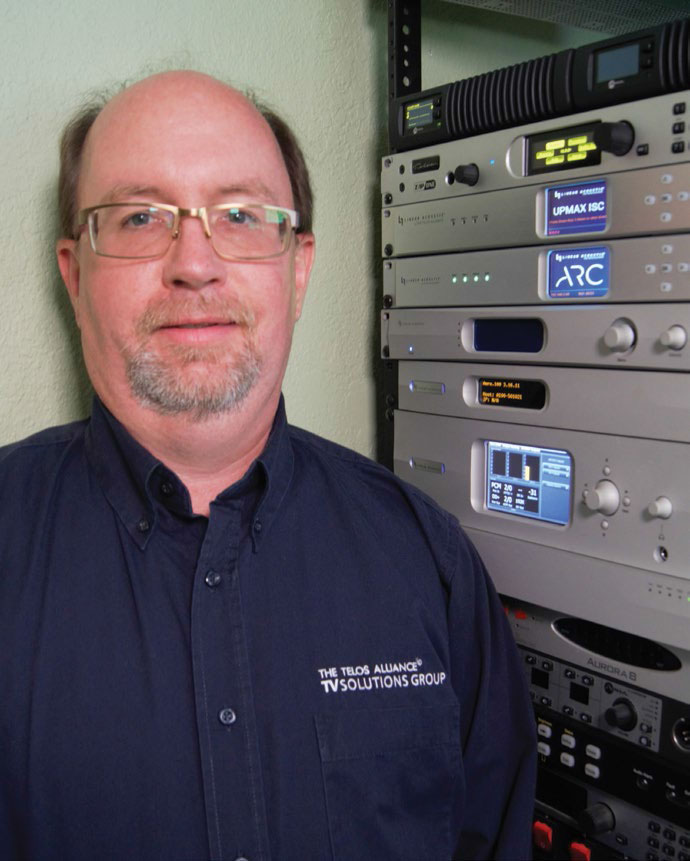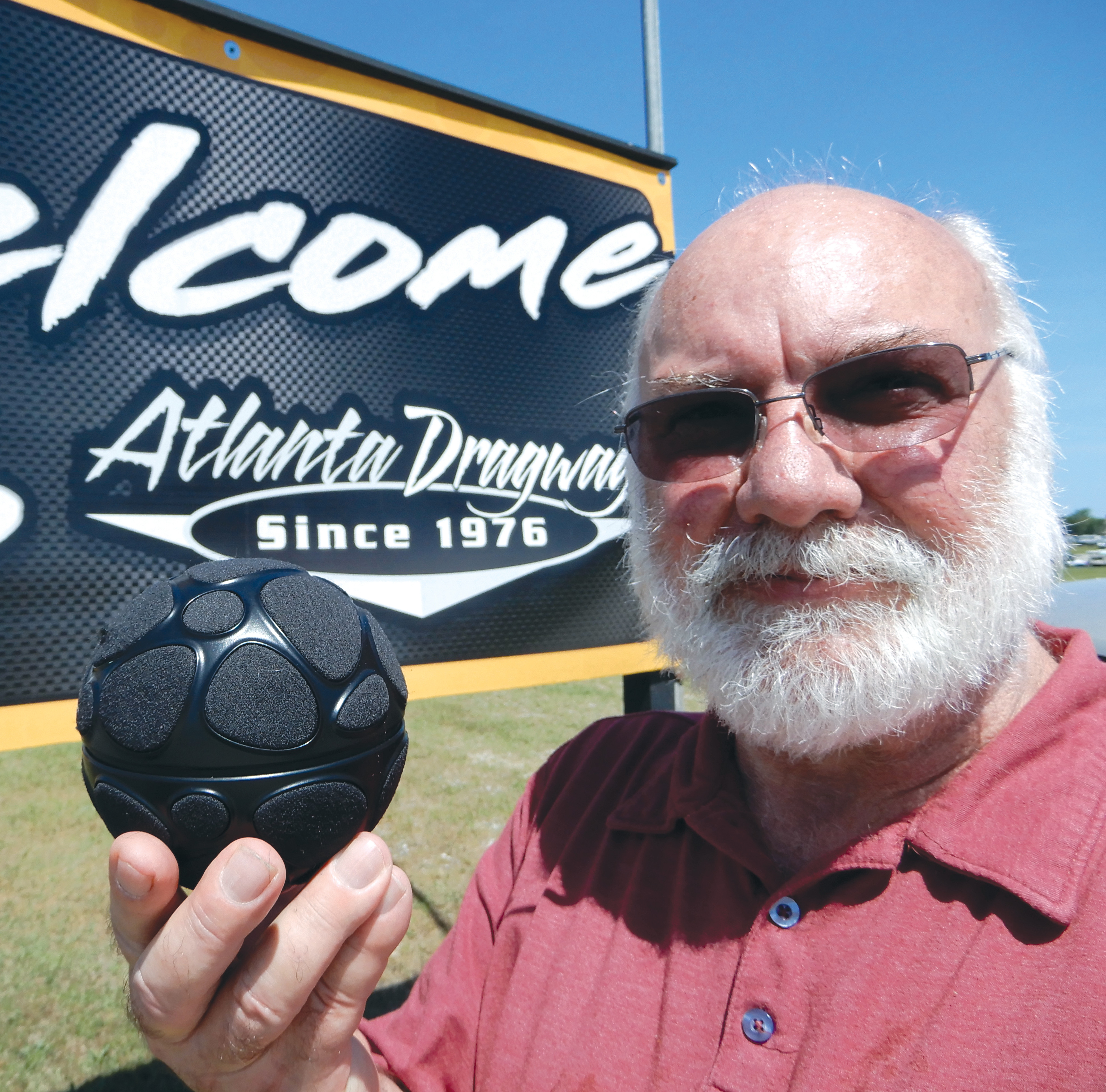For Audio Monitoring, Seeing Is Believing
Audio metering and monitoring can be described as the ability to determine certain characteristics of the audio signal either aurally or visually. For example loudness measurements are accumulated over a period of time and variations in the audio may be difficult for the sound mixer to detect by ear over the control room speakers, but variances obtained by a LKFS meter are obvious.
Metering and monitoring tools can be differentiated by their functions and features. As an audio mixer I am concerned about quantitative and qualitative evaluation/measurements of the sound throughout a broadcast while during the set up, the sound supervisor and EIC (engineer in charge) are more interested in a technical evaluation/measurements for signal continuity and routing.
VISUAL REFERENCE
A visual reference is an invaluable tool in a chaotic OB van because an experienced sound mixer learns how to visually associate an image or graphical reference with the sound they hear. The visual reference may alert the mixer that there is a problem that they need to address.
Equally difficult is troubleshooting the digital audio path without the tools that measure the technical aspects of a digital audio stream. I witnessed someone meter an audio signal and pass along the signal chain that the audio sounded fine without listening to the signal—seeing sound and hearing noise. In this article we will look at visual reference audio monitors for both live and post-production broadcast audio from an audio point of view.
The audio management tools (metering, monitoring and mastering) used by a live production mixer are certainly different than the needs and tools used by a post-production sound mixer. In 2019, most live productions and post-produced audio content is produced on different types of mixing platforms. Noteworthy is that there seems to be movement toward mix surfaces that can perform virtually all audio requirements—ingest, mix, route, record and be used for both live and post-production application.
Qualitative measurements like spatial imaging and phase are significant considerations for all audio production, but conforming to broadcasters’ deliverables specifications for loudness and true peak across all mix formats is critical and mandated by law.
There are a variety of loudness tools that can be applied to an edit session to meet a content provider service’s requirements. Nugen, a U.K.-based provider of audio monitoring tools, offers software plug-ins for monitoring, metering and mastering tools used by audio post houses for drama and factual content.
Nugen supports native 7.1.2 and 5.1.4 audio processing and loudness parameters for advanced loudness control and dialog consistency. Its DynApt plug-in now comes standard with its Loudness Toolkit and after trying it out, I would say this feature is essential.
“DynApt is an optional extension for LM-Correct, which allows corrections with dynamic adjustments, not just linear adjustments,” said Freddy Vinehill-Cliffe, product specialist for Nugen. “This means the user can correct multiple sets of parameters simultaneously, and gives the extra option of narrowing the LRA [loudness range]. DynApt has a unique algorithm, which uses volume-riding and scene-change recognition to make transparent-sounding adjustments.”
During rendering, the software conforms the mix to the required loudness specification and prepares the content for delivery over a wide array of audio formats from mono to various immersive formats supporting up to 7.1.2. Nugen’s software can also down-process audio signals with its Halo Downmix feature that gives the audio mastering process new ranges for downmix coefficients, and a Netflix preset as well.

The Nugen Visualizer is a metering and monitoring tool that can be used as a plug-in during mastering and as a standalone program on another computer. The Visualizer analyzes qualitative characteristics of your audio that impact the clarity and value of your sound. Phase and frequency correlation impact the dynamics and spatial imaging of a mix and sometimes it is what you do not hear, like low frequencies, that pass through unheard that ruin a great mix. (Fig. 1)
Nugen’s metering, monitoring and mastering is usually accomplished in post-production, while live compliance and adjustments of the audio is at the end of the mixer’s fingertips.
MONITORING FOR LOUDNESS
Since live loudness compliance is dynamic and often manual, live mixing desk manufacturers like Lawo and Calrec include many audio measuring options and capabilities directly into the console for easy viewing and screening by the operator.
Meter and monitoring of the audio signals needs to be at the source—in the control room or OB—while loudness management and monitoring is probably centralized down stream.
Linear Acoustic, part of the Telos Alliance TV Solutions Group, has designed and built standalone boxes for loudness control and management for more than a decade. Linear’s AERO system is unique because it can be inserted at different points and locations in the audio signal flow—all the way back to the network operations center to manage the audio signal for loudness compliance. Linear Acoustic has a series of AERO platforms to host the AEROMAX processing loudness management, along with the new ARC platform that hosts their latest loudness management technology, APTO.

“The AERO or ARC unit performs the loudness control in real time, and this unit is usually further downstream from the OB van and production,” said Larry Schindel, senior product manager at Linear Acoustic. “The AERO can be at the network or local affiliate who inserts local content or advertising, and their output [content] must be compliant with loudness legislation.
Before encoding the content into Dolby Digital for transmission, the broadcaster can use any of the series of AERO processors to adjust loudness control, select whether upmixing or downmixing is required and enable loudness logging of the output signal, according to Schindel.
“The AERO processors also provide separate processing control for local inputs, allowing local affiliates to process their locally generated programming or advertisements separately from the network programs,” he said.
I have known Linear Acoustic since its inception because of their close work with NBC. Linear has designed and continues to design processors and devices that can up-produce or enhance and spatialize audio signal for surround (and immersive) sound.
For immersive, Schindel recommends the company’s UPMAX, which can be used to maintain the sound field regardless of the channel configuration of the incoming content and can also be used creatively to enhance the surround (immersive) sound field.
“Parameters in the upmixer can be adjusted to help shape the sound for the user’s tastes, such as whether the center channel sounds are routed hard center or spread a bit into other channels, or how far back into the surrounds to steer up-mixed content,” Schindel said. “The UPMAX can monitor the input signal and auto-detect whether upmixing is needed and native surround content will pass through unprocessed.”
Upmixing can be done at the OB van or at the network because there will always be a mix of legacy material with mono or stereo sound and it is important to maintain a consistent sound field image all the way through the chain to the consumer/listener, Schindel added.
Linear Acoustic is developing a unit that provides immersive up-processing from stereo or 5.1-channel surround sound, according to Schindel. During the immersive sound migration, there will long be a need for up-producing mono, stereo and surround sound in the audio signal chain.
GETTING FROM HERE TO THERE
Beyond audio fidelity, proper evaluation of sound in the broadcast environment can be a difficult process because circuit continuity and signal routing can take precedence over sound fidelity in a chaotic broadcast situation. Sometimes the sound production process accumulates noise and distortion along the way, something a skilled sound mixer or tonemeister might hear but a transmission technician might not.
The ability to see and hear a variety of sources and formats from SDI, AES, MADI and even analog—including audio configurations from stereo to multiple multichannel audio formats at critical points in the processing chain—is critical for the live broadcasting continuity, and accurate visual tools are essential.
TSL has designed and built tools to monitor and meter the data stream and continues to support SDI, MADI and IP digital formats with its new SAM-Q platform introduced at the 2019 NAB Show. SAM-Q has channel analysis configurations for up to 128 channels and includes a selectable sound reference over headphones and a small speaker in the rack unit to confirm sound not noise. Ease of monitoring and troubleshooting the routing and signal integrity is an evaluating factor in choosing a device or tool.
Metering, monitoring and controlling audio signals is a critical responsibility of the engineers, audio operators and technicians. Metering, monitoring devices and software are valuable tools for quick troubleshooting, but always remember these programs and boxes can let you look at a visual representation of the audio, but can never guarantee the quality of audio content, only an ear.
Dennis Baxter has spent over 35 years in live broadcasting contributing to hundreds of live events, including sound design for nine Olympic Games. He is the author of “A Practical Guide to Television Sound Engineering,” published in both English and Chinese, and is currently working on a book about immersive sound practices and production. He can be reached atdbaxter@dennisbaxtersound.comor atwww.dennisbaxtersound.com.
Get the TV Tech Newsletter
The professional video industry's #1 source for news, trends and product and tech information. Sign up below.
Dennis Baxter has spent over 35 years in live broadcasting contributing to hundreds of live events including sound design for nine Olympic Games. He has earned multiple Emmy Awards and is the author of “A Practical Guide to Television Sound Engineering,” published in both English and Chinese. His current book about immersive sound practices and production will be available in 2022. He can be reached at dbaxter@dennisbaxtersound.com or at www.dennisbaxtersound.com.

